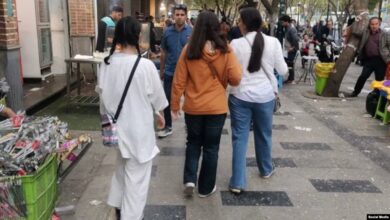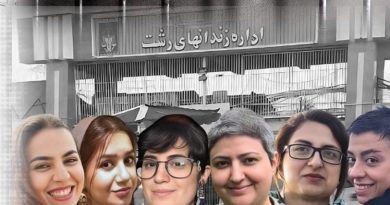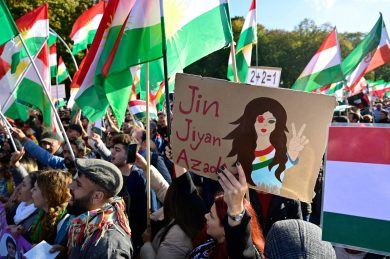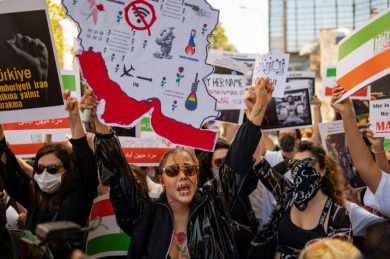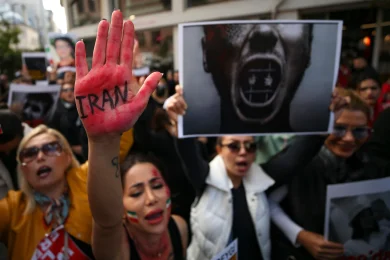Sanctions have long been a key tool in international diplomacy, used to pressure governments into compliance with global norms. For decades, Iran has been a primary target of economic sanctions, particularly for its nuclear ambitions, human rights violations, and support for terrorism. While sanctions aim to weaken the Iranian regime and curtail its oppressive activities, they have also sparked a debate over their impact on Iran’s freedom movement. Do sanctions help by pressuring the regime and empowering activists, or do they harm by exacerbating economic hardships for ordinary citizens and weakening grassroots resistance?
This article examines the complex role of sanctions in Iran’s political landscape, their intended and unintended consequences, and their impact on the country’s struggle for freedom and democracy.
Sanctions on Iran: A Brief Overview
1. Types of Sanctions Imposed on Iran
Sanctions on Iran primarily fall into three categories:
• Economic Sanctions: Restrictions on trade, financial transactions, and access to international markets, particularly targeting oil exports, which are a cornerstone of Iran’s economy.
• Targeted Sanctions: Measures aimed at specific individuals and entities, such as members of the Islamic Revolutionary Guard Corps (IRGC), government officials, and state-controlled companies.
• Military and Technological Sanctions: Bans on arms sales and the export of dual-use technologies that could support Iran’s military or nuclear program.
2. Key Players in Sanctions
• United States: The U.S. has imposed some of the most comprehensive sanctions on Iran, including the designation of the IRGC as a terrorist organization.
• European Union: The EU has implemented sanctions targeting Iran’s nuclear activities and human rights violations, although with a focus on maintaining diplomatic engagement.
• United Nations: While UN sanctions were lifted as part of the 2015 Joint Comprehensive Plan of Action (JCPOA), some measures remain in place.
3. Objectives of Sanctions
• To limit Iran’s ability to fund its nuclear and missile programs.
• To weaken the IRGC and its control over the economy and military.
• To pressure the regime to improve human rights and political freedoms.
The Impact of Sanctions on Iran’s Freedom Movement
Sanctions have a dual impact on Iran’s freedom movement, with both positive and negative consequences.
1. Positive Effects: Pressuring the Regime
• Weakened State Resources: Sanctions reduce the regime’s revenue, limiting its ability to fund repressive activities, such as crackdowns on protests and surveillance.
• Targeting the IRGC: By imposing sanctions on the IRGC and its economic empire, sanctions aim to disrupt the financial networks that fund oppression and regional destabilization.
• Diplomatic Isolation: Sanctions send a strong message of international condemnation, delegitimizing the regime and bolstering the morale of activists fighting for change.
2. Negative Effects: Collateral Damage
• Economic Hardship for Citizens: Sanctions often exacerbate inflation, unemployment, and poverty, disproportionately affecting ordinary Iranians rather than the regime’s elites.
• Weakened Civil Society: Economic struggles can divert attention from activism to survival, weakening grassroots movements and reducing public participation in protests.
• Propaganda Opportunities: The regime uses sanctions as a scapegoat, blaming foreign powers for economic woes and framing resistance movements as tools of foreign interference.
Sanctions and the Economy: A Double-Edged Sword
1. The Economic Impact of Sanctions
• Oil Exports and Revenue Loss: Sanctions targeting Iran’s oil industry have significantly reduced its export revenue, straining the government’s budget.
• Currency Devaluation: The Iranian rial has lost much of its value, leading to skyrocketing inflation and making essential goods unaffordable for many citizens
• Stunted Private Sector: Restrictions on trade and investment have weakened Iran’s private sector, stifling innovation and entrepreneurship.
2. The Burden on Ordinary Iranians
• Rising Costs: Sanctions have led to shortages of basic goods and skyrocketing prices, particularly for imported items like medicine and food.
• Health Crisis: Restrictions on financial transactions complicate the import of medical supplies, endangering public health and disproportionately affecting the vulnerable.
• Widening Inequality: While the regime’s elites maintain access to resources through corruption and smuggling, ordinary citizens bear the brunt of sanctions-induced hardships.
3. Opportunities for Regime Exploitation
• Strengthening the Black Market: Sanctions have enabled the IRGC to expand its smuggling operations, further consolidating its economic power.
• Centralized Control: The regime uses sanctions as a pretext to tighten control over the economy, awarding lucrative contracts to IRGC-affiliated companies and marginalizing independent businesses.
Sanctions and Grassroots Activism
1. Empowering Activists
• Morale Boost: International sanctions signal global solidarity with Iran’s freedom movement, encouraging activists by showing that the world recognizes their struggle.
• Weakened Repression Apparatus: Reduced state revenue limits the regime’s ability to fund its security forces, potentially creating openings for grassroots movements to grow.
2. Hindering Activism
• Economic Survival vs. Activism: As economic conditions worsen, many Iranians are forced to prioritize survival over resistance, weakening the momentum of protests.
• Restricted Access to Resources: Sanctions can inadvertently limit funding and tools available to activists, particularly those reliant on international support or digital platforms.
3. The Role of Digital Tools
• Circumventing Censorship: Activists rely on VPNs, encrypted messaging apps, and other tools to bypass regime censorship, but sanctions on tech exports can restrict access to these critical resources.
• Global Connections: Sanctions that hinder digital access can isolate Iranian activists, reducing their ability to connect with international allies.
Case Studies: Sanctions and Resistance Movements
1. The Green Movement (2009)
The Green Movement emerged after Iran’s disputed 2009 presidential election, marking one of the largest protests against the regime in decades.
• Role of Sanctions: While international sanctions were in place, activists criticized their economic impact on ordinary Iranians, arguing that they did little to empower the movement.
• Lessons Learned: The movement highlighted the need for sanctions to target the regime without exacerbating hardships for citizens.
2. Protests After Mahsa Amini’s Death (2022)
The death of Mahsa Amini while in morality police custody sparked nationwide protests, with women leading calls for justice and systemic change.
• Impact of Sanctions: Sanctions targeting the IRGC helped limit the regime’s resources, but economic struggles created additional challenges for protesters.
• Global Solidarity: The protests demonstrated the importance of international support, including sanctions that hold human rights violators accountable.
Balancing Sanctions and Support for Civil Society
The challenge lies in designing sanctions that pressure the regime while minimizing harm to ordinary citizens and empowering grassroots resistance.
1. Targeted Sanctions
• Focus on Elites: Sanctions should target regime officials, the IRGC, and affiliated entities, avoiding blanket measures that impact the general population.
• Asset Freezes: Freezing the overseas assets of regime elites limits their financial mobility without exacerbating domestic hardship.
2. Support for Activists
• Digital Tools and Training: Provide activists with the tools and skills to bypass censorship and communicate securely.
• Funding and Resources: Support civil society organizations and independent media to strengthen grassroots resistance.
3. Humanitarian Exemptions
• Medical and Food Supplies: Ensure sanctions include exemptions for humanitarian goods, preventing unnecessary suffering among ordinary Iranians.
• Facilitating Aid: Work with international organizations to ensure humanitarian aid reaches those in need without regime interference.
The Path Forward
Sanctions are a powerful tool but must be wielded carefully to balance pressure on the regime with support for the Iranian people. As Iran’s freedom movement continues to grow, the international community must reassess its strategies, ensuring that sanctions empower activists rather than hinder their efforts.
1. Sustained Global Solidarity
• Amplifying Voices: Keep Iran’s struggle for freedom in the global spotlight through media coverage, protests, and advocacy.
• Accountability Mechanisms: Hold the regime accountable for human rights violations through coordinated international actions.
2. Adaptive Sanctions Policy
• Dynamic Measures: Continuously assess and adjust sanctions to minimize unintended harm and maximize their impact on the regime.
• Collaboration with Activists: Engage with Iranian activists to understand their needs and refine sanctions accordingly.
Conclusion
Sanctions play a complex role in Iran’s freedom movement, offering both opportunities and challenges. While they can weaken the regime and demonstrate international solidarity, they also risk harming the very people they aim to support. A more nuanced approach, focusing on targeted measures and direct support for activists, can help ensure that sanctions empower Iran’s fight for freedom rather than hinder it. By working alongside Iranian civil society, the international community can help pave the way for a brighter, freer future.
Join Our Newsletter!
Stay informed with the latest updates, news, and ways to take action in the fight for justice and global security. Sign up now to get updates delivered straight to your inbox!

